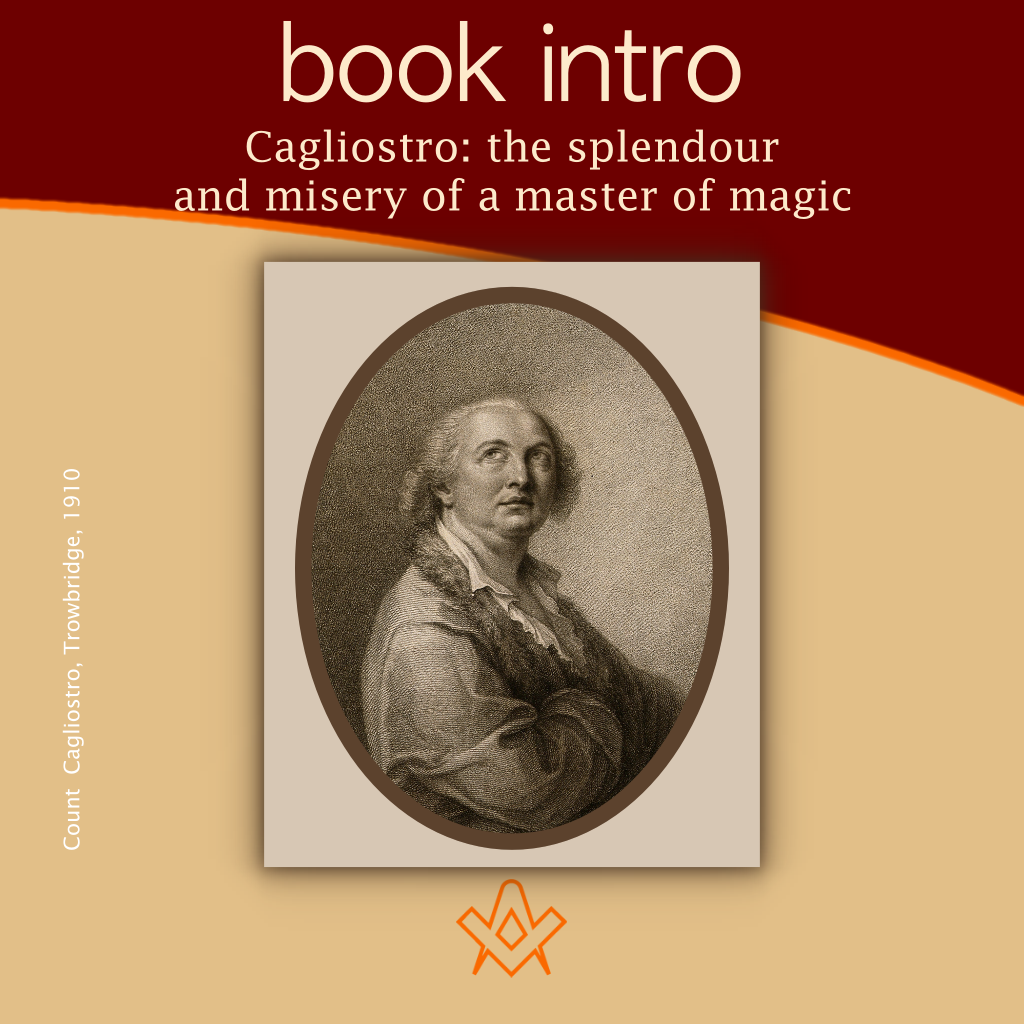Though much has been written about Cagliostro, most of it is confined to articles in encyclopaedias and magazines, or to descriptive paragraphs in works dealing with magic, freemasonry and the period in which he lived. [1]
This material may be described as a footnote which has been raised to the dignity of a page of history.
It is based on contemporary records inspired by envy, hatred and contempt in an age notoriously passionate, revengeful and unscrupulous.
By Trowbridge, W. R. H. (William Rutherford Hayes), 1866-1938
Chapman & Hall Ltd, London, 1910

Count Cagliostro
IMAGE CREDIT: Trowbridge, Chapman & Hall Ltd, London, 1910
It is, moreover, extremely superficial, being merely a repetition of information obtained second-hand by compilers apparently too ignorant or too lazy to make their own investigations.
Even M. Funck-Brentano, whose brilliant historical monographs have earned him a deservedly high reputation, is not to be relied upon.
In the sequel [2] to his entertaining account of the affair of the Diamond Necklace, the brief chapter he devotes to Cagliostro contains so many inaccuracies as to suggest that, like the majority of his predecessors, he was content to impart his Information without previously taking the trouble to examine the sources from which it was derived.

Marie Antoinette – Cagliostro was implicated in the ‘Diamond Necklace Affair’, a plot to defraud and defame the French queen.
IMAGE CREDIT: Trowbridge, Chapman & Hall Ltd, London, 1910
It has been said that every book on Cagliostro must be a book against him.
With this opinion I totally disagree. In choosing Cagliostro as the subject of an historical memoir I was guided at first, I admit, by the belief that he was the arch-impostor he is popularly supposed to be.
With his mystery, magic, and highly sensational career he seemed just the sort of picturesque personality I was in search of.
The moment, however, I began to make my researches I was astonished to find how little foundation there was in point of fact for the popular conception.
The deeper I went into the subject — how deep this has been the reader may gather from the Bibliography, which contains but a portion of the material I have sifted — the more convinced I became of the fallacy of this conception.
Under such circumstances there seemed but two alternatives open to me : either to abandon the subject altogether as unsuited for the purpose I had in view, or to follow the line of least resistance and, dishonestly adhering to the old method, which from custom had almost become de rigueur, help to perpetuate an impression I believed to be unfounded and unjust.
On reflection I have adopted neither course. Irritation caused by the ignorance and carelessness of the so-called “authorities” awoke a fresh and unexpected interest in their victim ; and I decided to stick to the subject I had chosen and treat it for the first time honestly.
As Baron de Gleichen says in his Souvenirs:
“Enough ill has been said of Cagliostro. I intend to speak well of him, because I think this is always preferable providing one can, and at least I shall not bore the reader by repeating what he !has already heard.”
Such a statement made in connection with such a character as Cagliostro is popularly supposed to be will, no doubt, expose me to the charge of having “whitewashed” him.
This, however, I emphatically deny. “Whitewashing,” as I understand this term, is a plausible attempt to portray base or detestable characters as worthy of esteem by palliating their vices and attributing noble motives to their crimes.
This manner of treating historical figures is certainly not one of which I can be accused, as those who may have read previous biographical books of mine will admit.
Whatever sympathy for Cagliostro my researches may have evoked it has always been exceeded by contempt of those who, combining an unreasoning prejudice with a slovenly system of compilation, have repeated the old charges against him with parrot-like stupidity.
The object of this book is not so much an attempt to vindicate Cagliostro as to correct and revise, if possible, what I believe to be a false judgment of history.
W. R. H. Trowbridge
London, August 1910.
Footnotes
References
[1] Prior to the present volume no complete biography of Cagliostro has been published in English.
[2] La Mort de la Reine: Les suites de V affaire du collier. Translated into English under the title of ‘Cagliostro and Company’.

Cagliostro: the splendour and misery of a master of magic
By: W. R. H. Trowbridge (Author)
It has been said that every book on Cagliostro must be a book against him. With this opinion I totally disagree.
In choosing Cagliostro as the subject of an historical memoir I was guided at first, I admit, by the belief that he was the arch-impostor he is popularly supposed to be.
With his mystery, magic, and highly sensational career he seemed just the sort of picturesque personality I was in search of.
The moment, however, I began to make my researches 1 was astonished to find how little foundation there was in point on fact for the popular conception.
The deeper I went into the subject — how deep this has been the reader may gather from the Bibliography, which contains but a portion of the material I have sifted — the more convinced I became of the fallacy of this conception.

The Masonic Magician: The Life and Death of Count Cagliostro and His Egyptian Rite
By: Philippa Faulks and Robert L.D. Cooper
Miracle-worker or man of straw? Count Alessandro Cagliostro was a cult figure of European society in the tumultuous years leading to the French Revolution. An alchemist, healer and Freemason, he inspired both wild devotion and savage ridicule – as well as novels by Alexandre Dumas, a drama by Goethe and Mozart’s opera The Magic Flute.
Count Alessandro Cagliostro’s sincere belief in the magical powers, including immortality, conferred by his Egyptian Rite of Freemasonry won him fame, but made him dangerous enemies, too. His celebrated travels through the Middle East and the capitals of Europe ended abruptly in Rome in 1789, where he was arrested by the Inquisition and condemned to death for heresy.
The Masonic Magician tells Cagliostro’s extraordinary story, complete with the first English translation of his Egyptian Rite of Freemasonry ever published.
The authors examine the case made against him, that he was an impostor as well as a heretic, and find that the Roman Church, and history itself, have done him a terrible injustice.
This engaging account, drawing on remarkable new documentary evidence, shows that the man condemned was a genuine visionary and true champion of Freemasonry. His teachings have much to reveal to us today, not just of the secrets of the movement, but of the mysterious hostility it continues to attract.
Recent Articles: in this series
 Book Intro: The Secret Doctrine Explore the profound synthesis of science, religion, and philosophy in H.P. Blavatsky's "The Secret Doctrine." Discover the true depth of Theosophy beyond the oversimplified term "Esoteric Buddhism" and uncover the universal wisdom that transcends religious boundaries. A compelling introduction to Theosophical literature and its broader, esoteric truths. |
 Book Intro - The craftsman and freemason's guide Dive into the enigmatic world of Freemasonry with Cornelius Moore's comprehensive guide. Uncover the symbolic rituals, trace the fraternity's historical roots, and gain a deeper understanding of this age-old society. Perfect for Freemasons and curious readers alike. Unlock the secrets of Freemasonry today! |
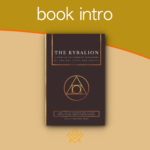 Unravel the secrets of the ancient Egyptian wisdom with our comprehensive guide to the Kybalion, by Three Initiates. Discover its influence on modern thought, the controversies surrounding it, and its seven profound Hermetic principles. Unlock the power of these timeless teachings to transform your understanding of life's mysteries. |
 Book Intro - The Working Tools of an Old York Master by Wilmshurst Unlock the Secrets of Freemasonry! Dive into the profound symbolism of 'The Working Tools of an Old York Master.' Discover the hidden meanings behind the square, compass, plumb line, and more. Embark on a transformative journey of personal growth and spiritual enlightenment. Uncover the ancient wisdom that has shaped generations of Masons. |
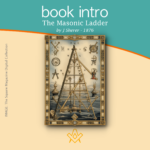 Book Intro - The Masonic Ladder by J Sherer Unlock the mysteries of Freemasonry with "The Masonic Ladder" by J. Sherer - - 1876. This 19th-century guidebook takes readers on a journey through the steps of the Masonic ladder, from the basic principles of the Entered Apprentice to the highest degree of the Sovereign Grand Inspector General. Discover the symbolism, allegory, and values of Freemasonry in this timeless classic. |
 Book Intro - The London mason in the seventeenth century The London Mason in the Seventeenth Century by Douglas Knoop offers a comprehensive examination of the lives and work of masons in the bustling city of London during the seventeenth century. The book delves into the intricacies of their craft, the socioeconomic and political forces that influenced their profession, and the role they played in shaping the architectural landscape of London. |
 Book Intro - History of Freemasonry, Gould, Robert Freke The History of Freemasonry is a comprehensive overview of the origins, development, and evolution of Freemasonry from its ancient roots to the modern era. The book explores the fascinating history of one of the oldest and most mysterious organisations in the world, which has been the subject of much speculation and curiosity over the centuries. - by Robert Freke Gould |
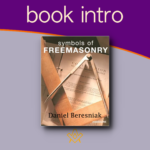 Book Intro - Daniel Beresniak Symbols Of Freemasonry This book is a collection of the symbolic images which Freemasons encounter on their journeys of transformation.' The texts and illustrations form an intimate dialogue whose subject is Freemasonry, and which casts light on the relationship between dreams and reality, reason, intuition and imagination. |
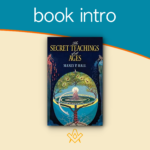 Book Intro - The Secret Teachings of All Ages by Manly P Hall The Secret Teachings of All Ages by Manly P Hall is a comprehensive and in-depth exploration of the various esoteric and occult traditions that have shaped human history. The book covers a wide range of subjects including alchemy, astrology, mysticism, and secret societies, and provides detailed explanations of the underlying principles and concepts. |
 Book Intro - Duncan's Masonic Ritual and Monitor Duncan's Masonic Ritual and Monitor is an impression of the Old York Rite published in New York in 1866. |
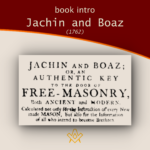 Book Intro - Jachin and Boaz (1762) Thirty two years after Samuel Prichard's Masonry Dissected (1730) a second detailed exposure was published Jachin and Boaz (1762) attributed to the same author, and met with equal distain by Freemasons of the time. However, these exposures offer the masonic historian an invaluable view in to how freemasonry was conducted during its early formation |
 Book Intro - Three Distinct Knocks (c.1760) Giving an exact account of all their proceedings in making a brother, with the three obligations or oaths belonging to the first second, and third degrees of masonry, viz. The entered apprentice, fellow-craft, and master-mason: with the obligating on belonging to the chair, and the grip and word. |
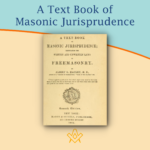 Book Intro - A Text Book of Masonic Jurisprudence An introduction to Albert Mackey's seminal work on Masonic Jurisprudence – the theory or philosophy of Masonic law. The Foundations of Masonic Law are to be found in the Landmarks, or Unwritten Law, and in the Ancient Constitutions, or the Written Law. These constitute the subject matter of the book. |
 Book Intro - The Perfect Ceremonies Of Craft Masonry 1871 A beautiful example of a the rituals, produced in a Medieval illuminated script style. Facsimiles still exist of this illustrated ritual book, of which the most authentically produced version is that available from the Scottish Rite Masonic Book Club. |
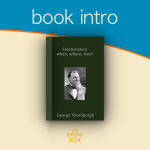 Book Intro – Freemasonry; when, where, how? Introduction to Freemasonry; when, where, how? By George Thornburgh |
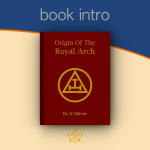 Book Intro - Origin Of The Royal Arch An introduction to the Origin of the Royal Arch, through the eyes of the English nineteenth century masonic author Dr G Oliver (1782–1867) |
 Book Intro – Symbolical Masonry Symbolical Masonry is a treasure-house of Masonic lore, including discussions of key concepts of the first three degrees, along with an extensive study guide. |
 This month we look at – 'A portrait gallery, with biographical sketches of prominent freemasons throughout the United States' |
 Extracted and abridged from The Mystic Tie: Or, Facts and Opinions, Illustrative of the Character and Tendency of Freemasonry By Albert Mackey, |
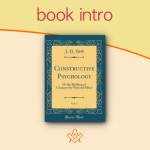 Book intro - Constructive Psychology The introduction to Constructive Psychology or The Building Of Character By Personal Effort by J D Buck a masonic author |
 book intro - Cagliostro: the splendour and misery of a master of magic Preface to the book by William Rutherford Hayes; Cagliostro: the splendour and misery of a master of magic |
 book intro - Origin of the Rosicrucians and the Free-Masons Historico-Critical Inquiry into the Origin of the Rosicrucians and the Free-Masons – Thomas De Quincey |
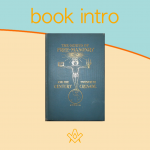 Book Intro - The Genius of Freemasonry The Genius of Freemasonry: “Has any brother anything to offer for the good of Masonry?” The following pages are the author’s answer to that question. |
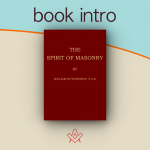 Book Intro - The Spirit of Masonry An essential source for anyone interested in exploring the inner mysteries of the Masonic Fraternity. |
 Book intro - History of Freemasonry Introduction to a classic masonic book by J. G. Findel, History of Freemasonry published 1866 |
 The Book of Constitutions for the Ancient Grand Lodge or Ahiman Rezon |
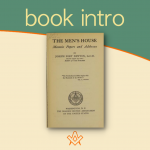 A short introduction to The Men's House, a collection of masonic papers and addresses |
 This is a general survey of Masonic origins, history and philosophy. It was at one time given to every new Mason in Iowa. |
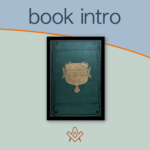 Book Intro - The Discrepancies of Freemasonry Written almost 150 years ago, this book contains wisdom still relevant today. |
 Book Intro - The Principles of Masonic Law "The first great duty, not only of every lodge, but of every Mason, is to see that the landmarks of the Order shall never be impaired". |
 Published in 1911, this fascinating book is equally relevant for the 21st century Mason with an interest in the more mystical side of Freemasonry. |
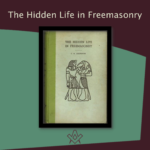 Book Intro - Hidden Life of Freemasonry Introduction to The Hidden Life in Freemasonry (1926) by Charles Webster Leadbeater |
 Book Intro - The Symbolism of Freemasonry Introduction to a classic masonic book; The Symbolism of Freemasonry: Illustrating and Explaining Its Science and Philosophy, its Legends, Myths and Symbols. |
 Book Intro - The Meaning of Masonry This is the Introduction to The Meaning of Masonry, a set of essays which discuss the esoteric side of Masonry |
 Book Intro - Illustrations of Masonry Introduction to Illustrations Of Masonry by William Preston (1742-1818) |
masonic knowledge
to be a better citizen of the world
share the square with two brothers

click image to open email app on mobile device


